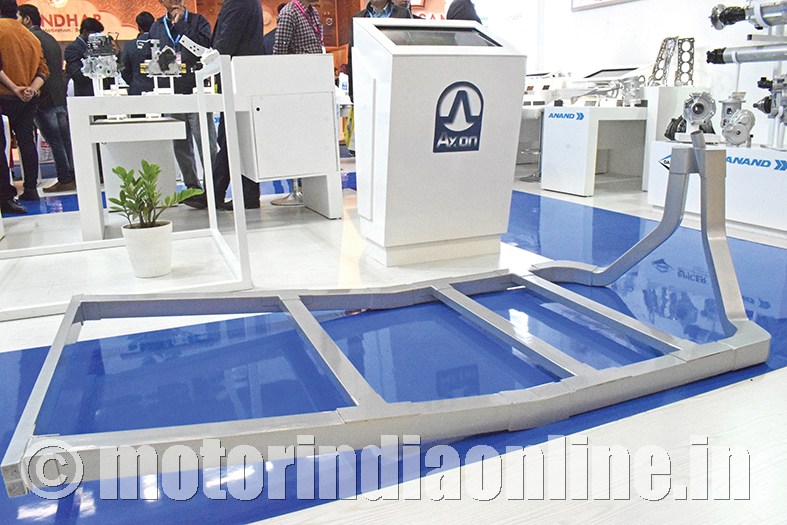In the last five years auto manufacturers have looked for material that guarantees light-weighting, cost-effectiveness, safety and durability. Incidentally, carbon fiber has been the material of choice for many automakers in structural components and stylishly aerodynamic exterior panels on race cars and aero-space. There are carbon composite structural products and engineering services supplied to both the automotive industry and other industry sectors where composite structures are required. However, limited traction has been achieved in its use in the mass mobility or cargo segments, particularly in India.

Axon Automotive Ltd., UK, has developed Axontex™, carbon fiber composite structure, for a wide range of applications. This technology is fully supported by design, manufacturing and finite element analysis services. The Axon team has years of experience in high performance composites for lightweight solutions and the breadth of experience to provide components, whole vehicle structures covering Chassis Parts and Body-In-White and complete vehicle prototypes. Strength and Stiffness of the composite material would be similar to or better than steel while being better able to absorb, the impact without passing it on to the passenger compartment, by smart multi-material design concepts.
Speaking exclusively to MOTORINDIA, Mr. Chris Taylor, M.D., Axon Automotive, elaborated: “Together with partnership with the ANAND Automotive Group we are providing extremely light-weight solutions to the Indian automobile industry. This composition can reduce 70 per cent of the weight against the metallic solution. With careful design and close alliance between ourselves and OEMs, the design can be made to be cost-effective. Overall, the total cost of ownership can be very attractive. Because, in addition to light weighting, the components which we supply allow the OEM to further light-weight the vehicle. That’s where an OEM gets a significant benefit.”
The Indian context
While the Indian OEMs are preparing for transition from the BS-IV to BS-VI emission norms, they are also looking at affordable yet durable solutions that can reduce the overall vehicle weight and accommodate many complex components. This would be of particular importance when the Indian OEMs work with electric motors and drive train for electromobility by 2030.
Mr. M.S. Shankar, Senior Director Technology and Innovation, Anand Automotive (P) Ltd., emphasized: “With concept engineering you can build an e-rickshaw on light-weight carbon fiber chassis frame. Some of the tests done on this are really significant. The concept design we have prepared is for the Indian context, people and goods movement within the city; where one does not need a high speed but a good torque and if a battery vehicle is designed it needs to run longer. We are offering close to 70 per cent weight reduction. The weight reduction can now be leveraged by the vehicle OEMs.”
Rightly so, they are solution provider and not vehicle manufacturer. If the targeted weight reductions is achieved, a small and light commercial vehicle can shave off 150-200 kilograms in its entirety.
“If the weight of the vehicle is reduced, the battery will run longer. The best part is that the manufacture of a chassis or a substructure would not need a press shop or a weld shop. They will neither need a tool room. No corrosion will also mean that the structure can last over a 15 year time period,” added Mr. Shankar.
Surely the capability has potential and if the OEMs use it, with a specific purpose in mind, as in a 40-seater bus that runs within the city can also be manufactured using the light-weight carbon fiber composite structure. That’s where volume would come to scale up the operation.
“Real volume would definitely come in SCVs, LCVs and city buses. Once the technologists jump in and push the road-block about the usage of the material, the mind-set will change and volumes would pick up. For us, the proposed JV, the first 3-4 years will be of continuous innovation in technological enhancements, while understanding and focusing on the implementation. Once the volume grows we would focus on the cost reduction initiative. We at ANAND, are ready to put up plants close to our customers, as has been demonstrated in the past, when demand improves,” concluded Mr. Shankar.
